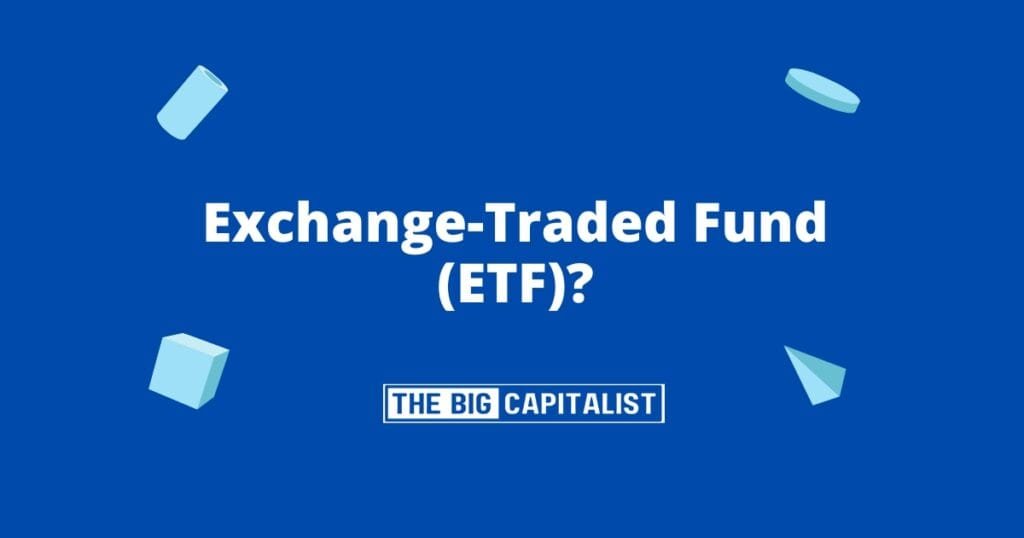Exchange Traded Funds, or ETFs, are versatile investment vehicles. They combine features of mutual funds with the flexibility of stocks. This makes them appealing for many investors.
ETFs first emerged in the 1990s. Since then, they have grown rapidly, transforming the way people invest. Their rise is linked to their simplicity and efficiency.
Like stocks, ETFs trade on major stock exchanges. You can buy and sell them throughout the trading day, which provides liquidity. This sets them apart from mutual funds, traded only once a day.
An ETF holds a diverse portfolio of assets. These can include stocks, bonds, or commodities. Some ETFs track specific indices, providing broad market exposure.
Investing in ETFs allows for instant diversification. This means spreading investment risk across many assets, which is beneficial for risk management. Understanding these basics can be a good first step toward engaging with ETFs.
The Mechanics of ETFs: How They Work
ETFs operate through a complex yet fascinating mechanism. They are created through a process involving authorized participants (APs). These APs play a key role in maintaining the ETF’s market price.
APs assemble the necessary basket of securities and deliver them to the ETF issuer. In return, they receive ETF shares, which are then traded on the stock exchange. This is known as the creation process.
The redemption process works the opposite way. APs return ETF shares to the issuer and receive the underlying securities. This ensures that ETF prices stay close to their Net Asset Value (NAV).
The creation and redemption mechanism helps manage supply and demand. It keeps prices aligned with the value of the underlying assets. This unique feature distinguishes ETFs from mutual funds and adds to their appeal for investors seeking efficient market exposure.
The Benefits of Investing in ETFs
ETFs offer a range of attractive benefits for investors. One of the main appeals is diversification. By investing in an ETF, you can gain exposure to a wide array of assets, reducing individual stock risk.
Another advantage of ETFs is their cost-effectiveness. They generally have lower expense ratios compared to mutual funds. This means more of your money stays invested rather than being used to cover fees.
ETFs also provide tax efficiency. Due to their unique structure, ETFs tend to incur fewer capital gains taxes. This can lead to higher net returns for investors over time.
Additional benefits of ETFs include:
- Flexibility in trading throughout the day.
- Transparency of holdings, with regular disclosures.
- Accessibility to niche markets or commodities not easily reached.
These benefits make ETFs a popular choice for both novice and experienced investors. Their versatility and efficiency have contributed to the growth of passive investing strategies globally.
ETFs vs. Mutual Funds: What’s the Difference?
ETFs and mutual funds are both pooled investment vehicles, but they operate differently. ETFs trade like stocks on exchanges, allowing investors to buy and sell throughout the trading day. This provides flexibility that mutual fund shares, which only trade at day’s end, do not offer.
Another key difference lies in their cost structures. ETFs typically boast lower expense ratios. This is due to their passive management style, where they often track indices. Mutual funds, especially actively managed ones, may charge higher fees to cover research and management expenses.
Lastly, tax efficiency is a major distinction. ETFs generally experience fewer taxable events. This is thanks to their unique in-kind creation and redemption process. Mutual funds may distribute capital gains more frequently, impacting tax obligations for investors.
Types of ETFs: From Index Funds to Commodities
ETFs come in various types, each serving different investment goals. The most popular type is the index ETF, which mirrors the performance of a specific market index, such as the S&P 500. These ETFs allow investors to gain broad market exposure with ease.
Another notable type is the bond ETF. Bond ETFs invest in a basket of bonds to provide steady income. They appeal to those seeking lower volatility compared to stocks. This type of ETF helps balance a diversified portfolio.
Commodity ETFs represent another category. They track the price of raw materials like gold, oil, or agricultural products. By investing in these ETFs, you can gain direct exposure to the commodity markets without physically owning the assets.
Here’s a quick rundown of common types of ETFs:
- Index ETFs
- Bond ETFs
- Commodity ETFs
- Sector ETFs
- International ETFs
Sector and international ETFs allow investors to target specific industries or geographical regions. Such focus enables tailoring of portfolios to align with personal investment themes or interests.
How to Choose the Best ETFs for Your Portfolio
Selecting the best ETFs requires careful consideration of your investment goals. Start by analyzing the performance history of the ETF. Look at how the ETF has performed during different market conditions.
Expense ratios play a critical role in choosing an ETF. Lower ratios generally mean higher returns over time. Ensure the chosen ETFs have competitive expense ratios to minimize costs.
Consider the ETF’s underlying index and its relevance to your strategy. Some investors prefer broad market indices, while others might opt for niche markets. Match the ETF to your desired asset allocation for optimal portfolio performance.
The Role of ETFs in Passive Investing
Exchange Traded Funds (ETFs) are a staple in passive investing strategies. They allow investors to track indices with minimal effort. Many ETFs follow major indices like the S&P 500.
Passive investing focuses on long-term growth and reduced fees. Since most ETFs have low expense ratios, they’re ideal for this approach. ETFs also offer easy diversification.
Another benefit is transparency. ETFs disclose their holdings daily, unlike mutual funds. This visibility helps investors understand exposure and make informed decisions. Passive investors can easily monitor ETF portfolios and adjust as needed.
Conclusion: Is an ETF Right for You?
ETFs offer flexibility, low costs, and diverse investment opportunities. For those aiming for a balanced and straightforward investment strategy, ETFs can be a wise choice. Evaluate your financial goals to see if these funds align with your long-term objectives. Always research before investing to ensure the best fit.
FAQ
What Are the Main Benefits of Investing in ETFs?
ETFs provide instant diversification, lower expense ratios compared to many mutual funds, and tax efficiency due to their creation/redemption mechanism, making them cost-effective for broad market exposure.
How Do ETFs Differ from Mutual Funds?
ETFs trade like stocks throughout the day, offering flexibility and real-time pricing, whereas mutual funds price once daily. Additionally, ETFs generally have lower fees and greater tax efficiency.
















